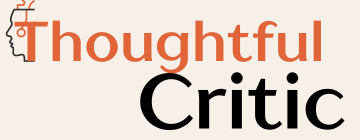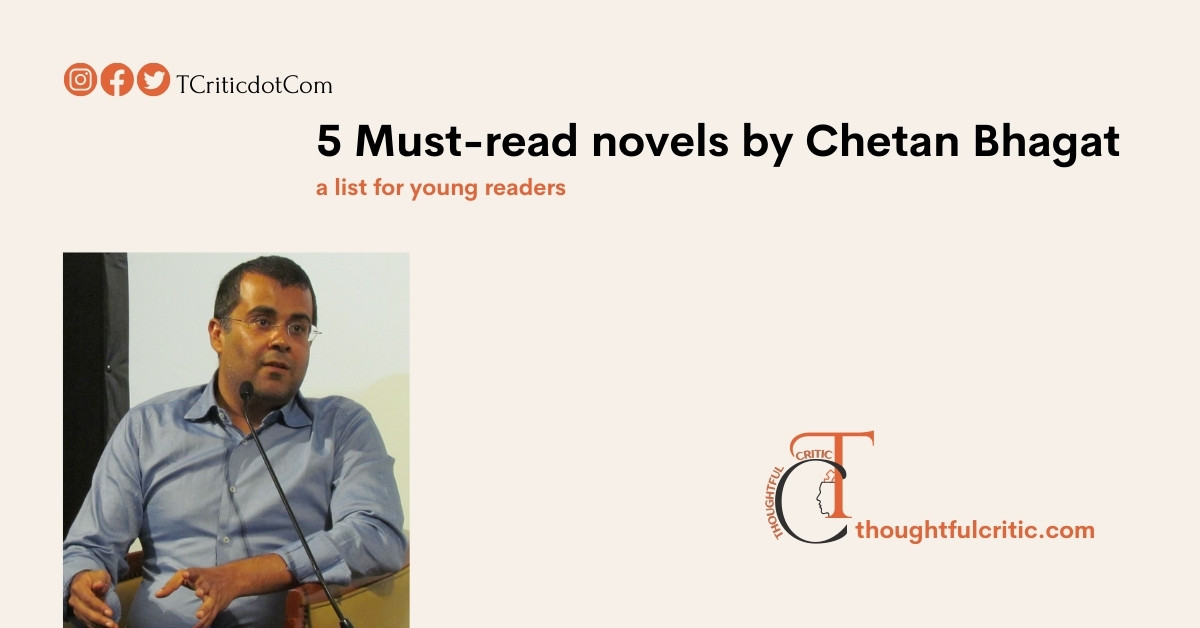Are you looking for Chetan Bhagat’s best novels? You have landed the right place in this vast world of the internet, where genuine information has become as rare as a yellow elephant in Shanghai! You will have the list of best novels by Chetan Bhagat to read and many other details about him and his writing. So, keep reading this article, and you will learn many things. I promise. 🙂
Chetan Bhagat is a phenomenon in Indian English literature, albeit a polarising one. His rise in the literary world is spectacular, fuelled by an acute understanding of the average Indian reader’s aspirations, struggles, and dreams. Bhagat began his career as a banker but soon found his calling in writing fiction that catered to a growing demographic—young Indians grappling with societal pressures, love, career choices, and more. Unlike many Indian authors who focus on the higher echelons of literary merit, Bhagat has often positioned himself as a populist, striving to write stories that resonate with the ordinary populace. His prose may not offer literary sophistication, but it undeniably delivers entertainment and relatability to the masses.
From the outset, Bhagat embraced the art of storytelling that reached beyond academic corridors, aiming instead at the heart of middle-class India. His characters are drawn from familiar walks of life, engaging in situations that many readers find comforting in their everyday simplicity. Despite criticisms of lacking literary finesse, Bhagat’s books remain in demand for their accessibility and entertainment value, bridging a gap few contemporary Indian authors have managed to fill. His writing represents a new wave of Indian fiction that connects to young readers via relatable themes of love, ambition, and societal challenges.
Who Should Read Chetan Bhagat?
Chetan Bhagat’s novels are ideal for readers who seek engaging, easy-to-read stories that reflect the realities of modern Indian life. His works particularly appeal to young adults balancing traditional expectations with contemporary desires, especially in urban settings. Bhagat’s characters mirror the aspirations of India’s youth, making his novels compelling for students, early professionals, and anyone navigating life’s pivotal moments. His simple language, fast-paced plots, and straightforward style make his books popular for those who are either new to reading or prefer uncomplicated narratives.
Bhagat also appeals to readers who are not necessarily looking for literary depth but rather for stories that evoke emotions and address relatable issues, such as relationships, career dilemmas, and social pressures. His works cater to the mainstream, making them accessible to people from various educational and social backgrounds. His novels often blend humour with social commentary, making them enjoyable for those who seek light yet reflective reads.
Five Must-Read Novels by Chetan Bhagat
1. Five Point Someone (2004)
Five Point Someone is the novel that propelled Chetan Bhagat to literary fame. Set in an engineering college, the story follows three friends—Hari, Ryan, and Alok—who struggle with the academic pressures of IIT (Indian Institute of Technology). The novel explores the tension between following one’s passion and conforming to societal expectations of success. It delves into themes of friendship, the flaws in the Indian education system, and the burden of scoring high marks to achieve ‘success.’
The novel’s conversational tone, relatable characters, and depiction of student life struck a chord with readers. The message—that life is more than grades—resonated with young Indians, making it a bestseller. While the narrative lacks literary intricacy, its conversational style and humorous elements make it engaging. Bhagat’s candid portrayal of college life and light-hearted humour helped Five Point Someone achieve iconic status among Indian youth.
2. 2 States: The Story of My Marriage (2009)
2 States is a semi-autobiographical novel that showcases Bhagat’s flair for blending personal experience with fiction. The story revolves around the inter-caste love affair between Krish, a Punjabi boy, and Ananya, a Tamilian girl. Their love is simple, but getting their families to approve their marriage becomes arduous. The novel deftly explores the cultural differences between North and South India, with Bhagat using wit and humour to highlight the complexities of Indian marriages.
This novel is a significant departure from Bhagat’s earlier works, as it tackles regionalism, familial expectations, and societal norms around love and marriage. It captures the essence of modern relationships in India, where love often clashes with deeply ingrained cultural values. Bhagat’s straightforward narrative, infused with comedic relief and emotional depth, makes the novel stand out as one of his heartfelt works.
3. The 3 Mistakes of My Life (2008)
Set against a rapidly changing India backdrop, The 3 Mistakes of My Life tells the story of three friends—Govind, Ishaan, and Omi—who aspire to start their own business in Ahmedabad. The novel blends personal aspirations with more significant national events, such as cricket, religion, and politics. As their business grows, the friends face a series of mistakes and tragedies that test their bonds and aspirations.
Bhagat cleverly intertwines actual events, like the Gujarat earthquake and communal riots, with fictional drama, creating a narrative reflecting friendship and ambition’s fragility in a turbulent socio-political climate. The novel is part of a coming-of-age story and part socio-political commentary, showcasing Bhagat’s attempt to address deeper issues while maintaining the simplicity that appeals to his readers. While critics have pointed out its lack of nuance in handling complex themes, the novel resonates with readers who appreciate Bhagat’s accessible storytelling style.
4. Half Girlfriend (2014)
Half Girlfriend is a love story that addresses linguistic and cultural barriers in relationships. The novel follows Madhav Jha, a boy from a small Bihar town who falls in love with Riya Somani, an upper-class girl from Delhi. The novel’s title refers to Madhav’s ambiguous relationship with Riya, who is unwilling to commit fully but remains a significant part of his life.
The narrative captures Madhav’s internal struggles as he navigates his insecurities and the societal expectations placed on him. At its core, the novel critiques the elitism of urban India and the widening cultural divide between rural and metropolitan areas. Bhagat’s use of simple language and relatable characters strikes a chord with readers who identify with the class and cultural divisions portrayed in the story. Though the novel has been criticised for its clichéd plot, its appeal lies in its portrayal of the complexities of unrequited love.
5. One Indian Girl (2016)
One Indian Girl offers a feminist perspective, a notable departure from Bhagat’s usual male-centric narratives. The story is told from the point of view of Radhika Mehta, a successful investment banker who grapples with societal expectations surrounding marriage, career, and love. The novel explores the tension between personal ambition and the traditional role of women in Indian society.
Bhagat uses Radhika’s internal monologue to address the challenges faced by career-driven women in a patriarchal society. Although the novel has faced mixed reviews, with some accusing Bhagat of offering a superficial take on feminism, it remains an essential book in his oeuvre for its attempt to bring gender issues to the forefront. One Indian Girl highlights women’s pressure to conform to societal expectations while pursuing their dreams, making it a relevant read for modern Indian readers.
Click here to buy Chetan Bhagat novels from Amazon India–the best offers may await you!
Chetan Bhagat and His Impact on Academic Circles
Despite his critics, Chetan Bhagat has managed to compel the academic literary circle to take note of his works. Though often dismissed as ‘mass-market’ fiction, his novels have initiated debates about the nature of contemporary Indian writing in English. Bhagat’s success represents a shift in the Indian literary landscape, where the distinction between highbrow and lowbrow literature is increasingly being questioned. While his prose lacks the complexity found in works of literary giants, Bhagat’s contribution lies in making English-language fiction accessible to a broad audience, including first-time readers.
Bhagat’s stories also offer valuable insights into the socio-cultural dynamics of modern India, which have become areas of interest in academic discussions on popular culture, class divisions, and the aspirations of India’s youth. His works are frequently studied in the context of ‘Indian popular fiction’ in literary courses, with scholars exploring how Bhagat’s novels reflect the evolving tastes and concerns of contemporary Indian readers.
Conclusion
Chetan Bhagat’s literary journey is a testament to the power of relatable storytelling. While his works may not satisfy the demands of literary purists, they have created a niche in Indian English literature by connecting with the everyday reader. His novels resonate with a broad audience, offering a blend of humour, emotion, and social commentary. By addressing the aspirations and challenges of young Indians, Bhagat has cemented his place as a voice of modern India, making him one of the most recognisable names in contemporary Indian fiction. Whether one reads his novels for entertainment or to understand the pulse of a generation, Bhagat’s impact on Indian literature is undeniable.
Ashish for Thoughtful Critic




